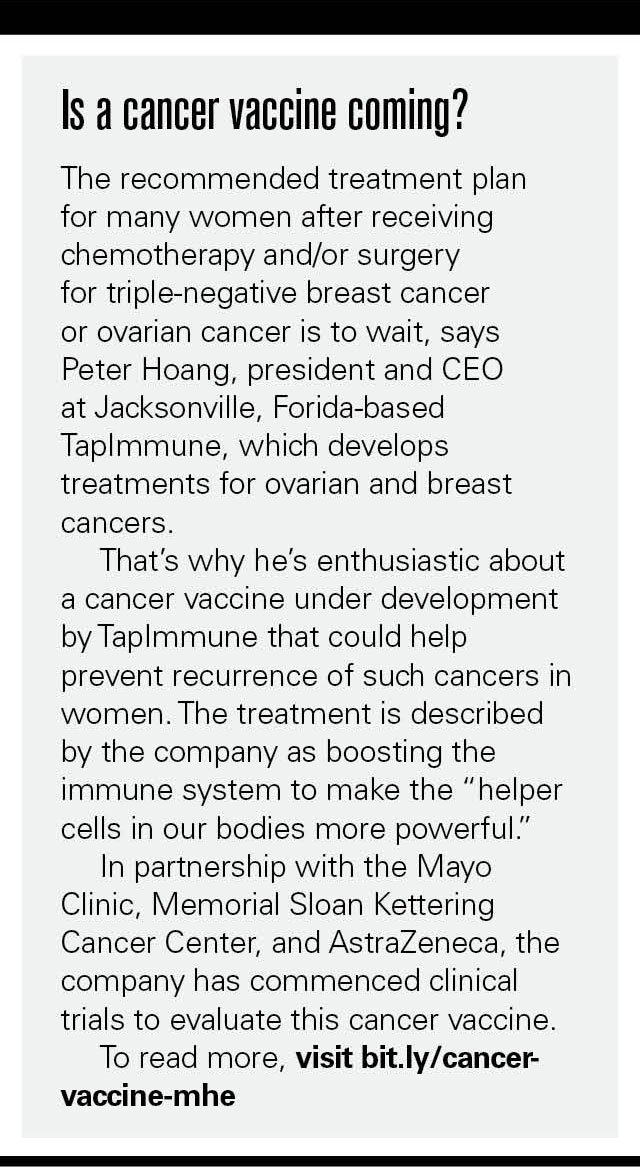Three Vaccine Developments Healthcare Execs Should Watch
Vaccines are an important part of creating “herd immunity” to keep infectious diseases in check. Here are three vaccine developments that have far reaching implications for public health.
Is a cancer vaccine coming?

Seagle

The number of Americans who believe vaccinations for diseases like measles and polio are crucial to public health has fallen 10% in the last 10 years (from 80% to 70%), according to a new survey from Research America.
The findings should be concerning for healthcare executives, not only due to the impact non-vaccinations can have on patients, but also due to the high cost.
The economic burden of diseases associated with 10 vaccines recommended by the CDC for adults was $8.95 billion, and unvaccinated people were responsible for almost 80% of that burden ($7.1 billion), according to a Health Affairsstudy.
“Immunizations protect the public from serious diseases and assist in preventing illnesses, disabilities, and even deaths,” says Jennifer Seagle, PharmD, area clinical manager for CompleteRx. “Vaccines, when utilized, have the power to greatly reduce the financial burden on the healthcare global economy.”
Here are three vaccine developments that have far reaching implications.
- Shingles vaccine. Shingrix (GlaxoSmithKline), a recombinant zoster vaccine approved by the FDA in October 2017, has replaced Zostavax as the CDC’s preferred vaccine for the prevention of shingles in healthy adults 50 years and older. Shingrix is given as a two-dose series separated by two to six months and costs about $280 per two dose-series compared to $213 for a single Zostavax vaccine. In clinical trials, the efficacy of Shingrix topped 96.6% for adults 50 to 69 years old for prevention of shingles, but that fell to 92.3% in those older than 70.
- Global Rabies Initiative. The World Health Organization (WHO) along with other international health agencies including the Global Alliance for Rabies Control, developed the ‘Zero by 30’ initiative in 2015 with the goal to provide a common strategy to achieve zero human rabies deaths by 2030. The initiative focuses on improving access to vaccinations for bite victims, providing education on bite prevention and expanding dog vaccination coverage to reduce human exposure.
- Influenza vaccine. The Advisory Committee on Immunization Practice recommends annual influenza vaccination for all persons aged 6 months and older who do not have contraindications. According to the CDC, vaccine composition is reviewed annually through year-round surveillance in more than 100 national influenza centers around the world, after which the WHO makes recommendations on the composition of the influenza vaccine for each year. Overall vaccine effectiveness against influenza A-the predominant strain of influenza this season-was estimated at 25% as of February 15, 2018. The WHO made its recommendations in February for the strains to target for the 2018 to 2019 vaccine.
Pipeline promising
There are currently 214 vaccines in the pipeline worldwide, says Seagle. “Of those, 40 agents solely prevent influenza. Many vaccines are important during different stages of life and health insurers need to take this into account as they design plans.”
Two vaccines in development could greatly benefit public health. The first is a vaccine in phase 2 clinical trials for the prevention of Staphylococcus aureus infections in patients who are undergoing pre-surgical prophylaxis for elected orthopedic surgery. The second is a vaccine in development for HIV that could be made available as early as 2020.
Erin Bastick, PharmD, RPh, is staff pharmacist at Southwest General Health Center, Middleburg Heights, Ohio.

David Calabrese of OptumRx Talks Top Three Drugs in Pipeline, Industry Trends in Q2
July 1st 2020In this week's episode of Tuning Into The C-Suite podcast, MHE's Briana Contreras chatted with David Calabrese, R.Ph, MHP, who is senior vice president and chief pharmacy officer of pharmacy care services company, OptumRx. David is also a member of Managed Healthcare Executives’ Editorial Advisory Board. During the discussion, he shared the OptumRx Quarter 2 Drug Pipeline Insights Report of 2020. Some of the information shared includes the three notable drugs currently being reviewed or those that have been recently approved by the FDA. Also discussed were any interesting industry trends to watch for.
Listen